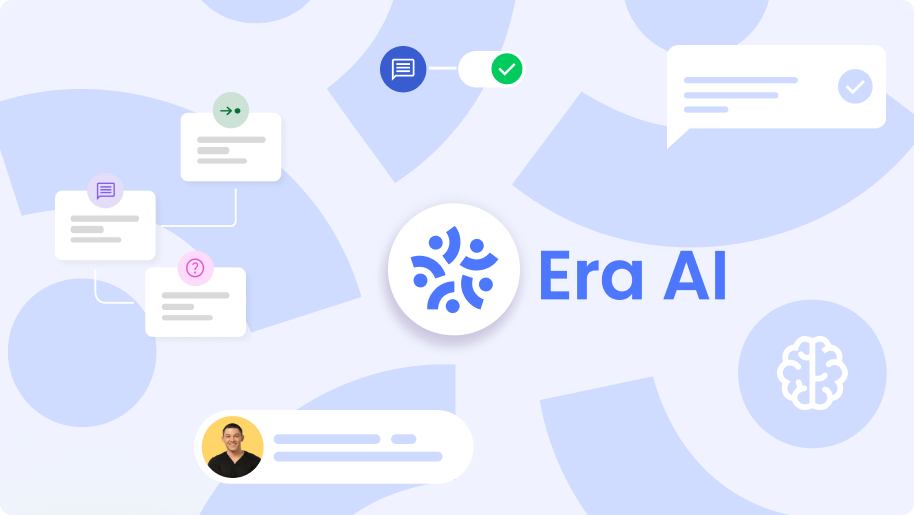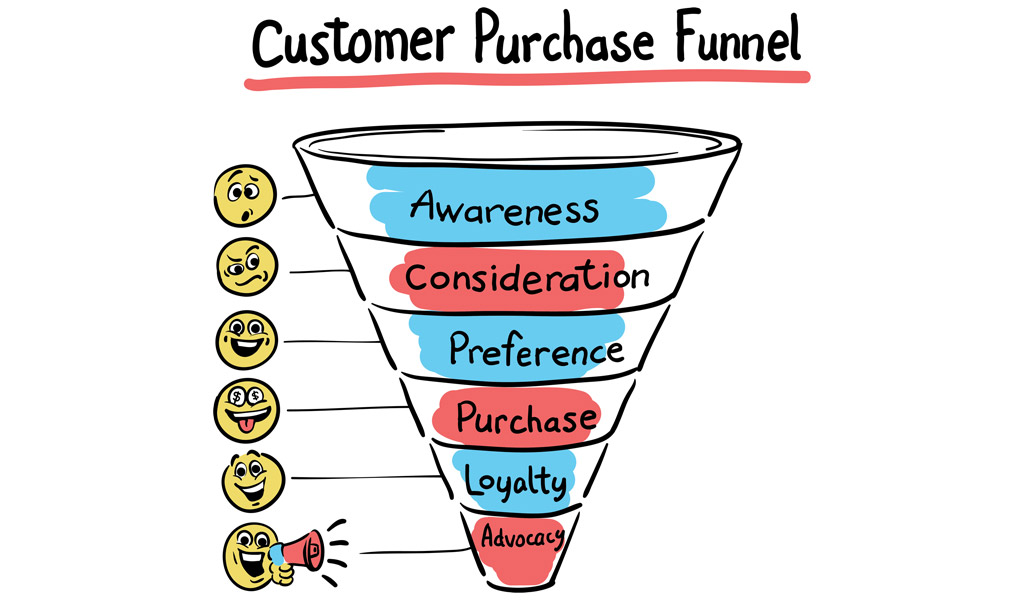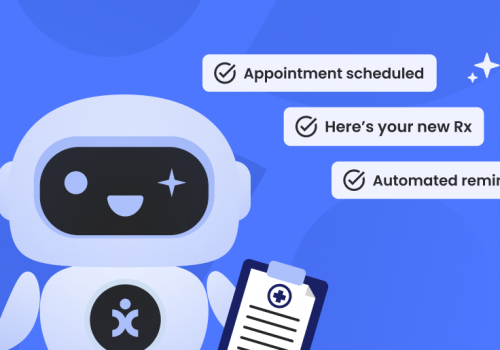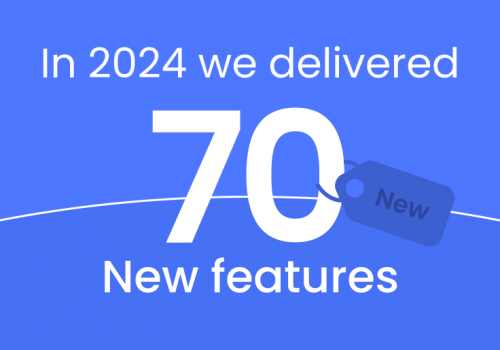Optimize Your Marketing Funnel. Leads are an essential element of any business. Only by capturing leads can we sell our product, find more loyal customers, and boost revenues. But, “lead” is a broad term, and being broad isn’t a good thing in business. Over the last decade, companies have become hyper-focused on doing the exact opposite. Companies today prefer a specific and targeted approach to everything they do, and with good reason. The more specific you are with your goals and your strategies, the better ROI you achieve. The same is true for leads. There are different levels of quality and specifications for each lead that comes your way and knowing the difference can make or break the sale.
Today we’re going to be focusing on marketing qualified leads (MQL)s – the leads that have the highest chance of conversion. If you can perfect your strategy for getting more MQLs, you can deliver better leads to the sales team and make more sales. It all comes down to your marketing funnel and the tools and techniques you use to generate more MQLs. Let’s take a look at 12 ways you can optimize your marketing funnel to generate more MQLs.
What is a Marketing Qualified Lead?
A marketing qualified lead (MQL) is a prospect who has an increased likelihood of becoming a customer because they have already been primed through various marketing methods. These methods could be thinking like warming them up to your brand, developing trust, and effectively positioning them to accept your solution.
What’s the difference between MQLs and Sales Qualified Leads?
In business, sales and marketing are often lumped into one. While it’s true that sales and marketing are connected, they both have distinct roles and goals and should be treated separately. The role of marketing is to bring qualified leads to the sales organization. The role of sales is to take these qualified leads through the sales process. They work in tandem, but their efficacy should be measured independently. The marketing team should be judged on their ability to bring in qualified leads, and the sales team should be judged on their success at converting these leads.
How Do MQLs Fit into the Sales Funnel?
When a lead first comes into the funnel, they are often considered an “information qualified lead.” These people just want to learn more about your product or brand – they’re curious, but not curious enough to buy. But as they move through the funnel, they transform into marketing qualified leads. The MQL still isn’t ready to buy your product, but they’re interested enough in your brand to hear from you regularly.
When you get an MQL, you want to keep your brand in front of them as much as possible (without crossing the line into being annoying). The logic behind this is simple. If you keep your brand in front of the lead using several channels, you can build your authority and keep your brand prominent in their mind. The channels here could be email, social media, and targeted ads. When the MQL is finally ready to make a purchase, your brand will instantly come into their minds.
When the MQL reaches a certain point in the sales funnel, they become sales qualified leads (SQL), sometimes called sales accepted leads. This is typically the point where the lead will receive an offer. It’s then for the sales team to follow up on this offer and nurture the lead until they get a close.

12 Expert Tips for Driving More Marketing Qualified Leads
1. Focus on Buyer Personas
You’ll find it difficult to attract more MQLs without segmenting your audience from the beginning. You want to ensure that your message gets through to people who are likely to convert into customers. And to do this, your content must resonate with those people.
One study found that 88% of B2B marketers are accommodating the information needs of their audience. If you’re not already, then you should be too. For example, let’s say you sell SaaS software. Who has the most sway when on whether the company should buy your product? Is it the campaign manager? CMOs? Executives? Whatever group it is, they have unique informational needs. To recommend your product to their seniors, employees in decision making roles have to prove its business benefit and ROI, so you should put this information right in front of them.
2. Listen to Your Customers
You can’t persuade your customers to buy from you if you don’t understand what they want and need. The key to understanding your customers is stepping outside of what you think and asking them what they think. Marketers and other business professionals often make assumptions about buyers that turn out to be incorrect. Don’t make assumptions; follow the data.
You can:
- Conduct regular customer surveys on email, social media, or your website.
- Ask for feedback from specific accounts.
- Push for collaboration – Ask your customers what they think of your marketing design by asking specific questions about their buyer journey. For example, how did they hear about you? And what influenced their decision to buy?
3. Consider the Entire Brand Experience
Consistency is vital in the digital age. Your customers should receive the same brand experience no matter what channel they use. It’s crucial to build your brand presence in several places (Facebook, Instagram, LinkedIn, website) and ensure that experiences are consistent across the board. If the experience is inconsistent, then you might be wasting your time targeting specific segments.
For example, let’s say you are targeting business decision-makers for your SaaS solution. However, these decision-makers mostly use LinkedIn while at work, and you have a small presence on LinkedIn. You also don’t check LinkedIn very often throughout the day, so there can be long delays to messages. In this scenario, it doesn’t matter if your Facebook or Instagram brand experience is excellent because the customers you are targeting will likely never see it.
4. Customer Journey Mapping
A customer journey map aims to get a holistic view of everything your customers experience throughout the buying process. These maps help capture every moment and relevant touchpoint for customers. You can use the map to define how you communicate with customers at each touchpoint in the journey.
Here are some quick tips on creating a customer journey map:
- Identify and define your buyer personas.
- Identify any opportunities for data gathering or personalization.
- Find customer goals that align with your business goals.
- Identify the best communication channels for each persona.
- Brainstorm content ideas.
5. Create Educational Content
At the beginning of the sales or marketing funnel, prospects become aware of your brand or product. They usually have a problem they need to fix or desire something that can add value to their life or work. They might be actively looking for solutions, or they might just be thinking a little more about addressing the problem in the future. At this point, your brand is only one of the many options available to them.
For the customer to move down the sales funnel, they have to understand what makes your brand different from all the rest. This is why creating educational content is so important. You want to present your company as an expert or authority in the industry. And one who understands what your customers want and need and listen to them. According to one study by Conductor, people are 131% more likely to buy from a brand immediately after reading educational content.

6. Create Solution-Oriented Articles
These articles aim to highlight all the solutions to specific issues. For example, let’s say you sell software that helps businesses create surveys. You could make an article like “The 5 best online survey tools in 2021”. In the article, you highlight your company as one of the best, or the best (without bashing your competitors).
7. How-to Videos
These videos allow you to answer any common questions that your customers have through an educational medium. You can pick a broad topic, like “How to speed up your WiFi”, and include simple step by step suggestions. Then, at the end of the video, you can recommend your product as the tool to do all of this. Videos often get a lot of engagement since people usually prefer to watch videos over reading articles. They also give you the chance to show off some of your personality and company voice and style.
8. Research Reports
Research reports are particularly effective for B2B companies. You can conduct your own research on key aspects of your industry and share this information with your audience. This demonstrates that you are actively engaged in the industry and can be trusted as an authority.
9. Ensure You Have Clear Calls-to-Action (CTA)
If you have a robust marketing funnel, then you’ve put a lot of work in to get your customers through each stage of the funnel. You’ve carefully crafted each stage, created your buyer personas, and conducted extensive research about every touchpoint. Don’t make the mistake of not being firm enough with your customers and just leaving action up to them. Utilize CTAs to push your customers in the direction you want them to go. Here are some you can use:
- Book now
- Go Premium
- Start your free trial
- Schedule and appointment
10. Focus on Search Engine Optimization (SEO) Strategies
You’re going to spend a lot of time creating content, and it would be a massive shame if that content never got seen by anyone because it isn’t optimized. Here are some tips on making sure your content is seen and drives more visitors to your site:
- Do keyword research – Find out what your customers are searching for. Don’t just focus on the most prominent keywords or keyword phrases because these are often hyper-competitive. Sometimes it’s better to focus on keywords relevant in your industry but only have a couple of thousand hits.
- Define your target audience and their individual needs.
- Find gaps or opportunities – Is there something you can write about that your competitors haven’t touched yet? Or is there something you can expand on or add to the conversation in a way that adds more value to your readers?
- Analyze what your competitors are doing and see where you can take it a step further.
11. Ensure You Have a Robust Customer Relationship Management Process
Getting customers is one thing, but you also need to ensure you can retain customers by consistently providing positive experiences once your customers are through the door. Identify touchpoints where you can maximize customer experiences and strengthen your relationships. Remember, it’s much cheaper to retain customers than to acquire new customers, so you should focus on retention heavily.
12. Realistic Personalization
When leads reach the middle of the marketing funnel, it’s time to start pushing more personalized content based on their segment. You can use the educational content we discussed above in conjunction with customized offers and lead magnets (offering them something useful that they can implement themselves).




















